- Home
- TV History
- Network Studios History
- Cameras
- Archives
- Viewseum
- About / Comments
Skip to content




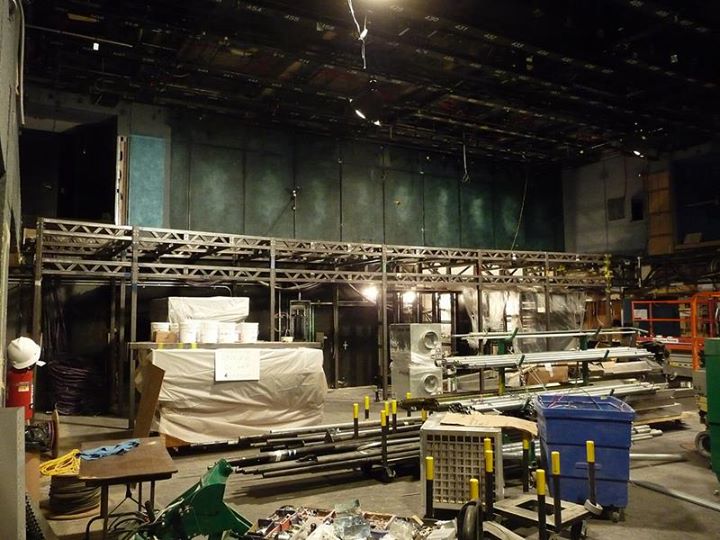



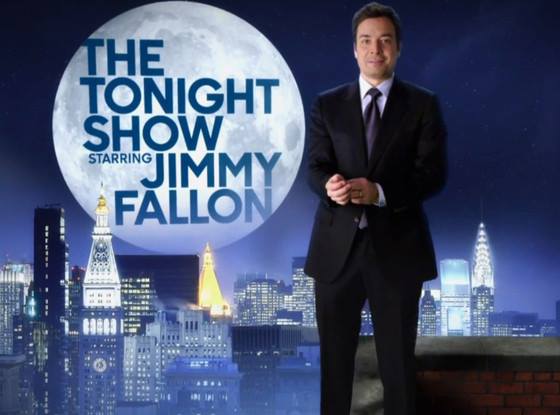

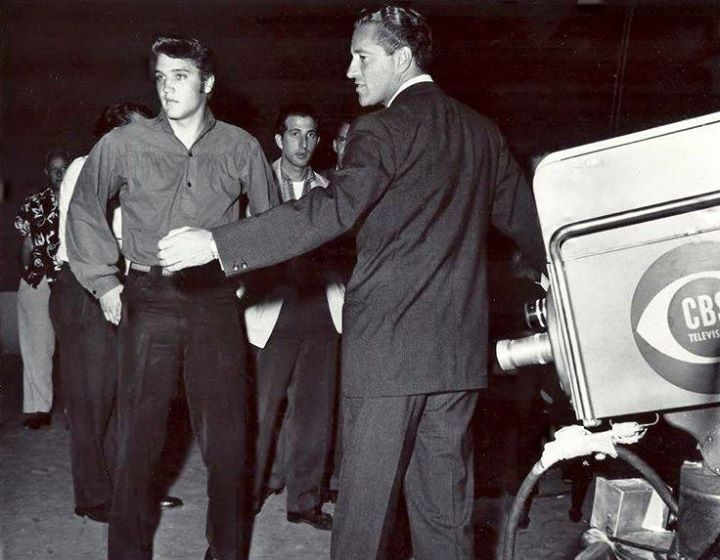

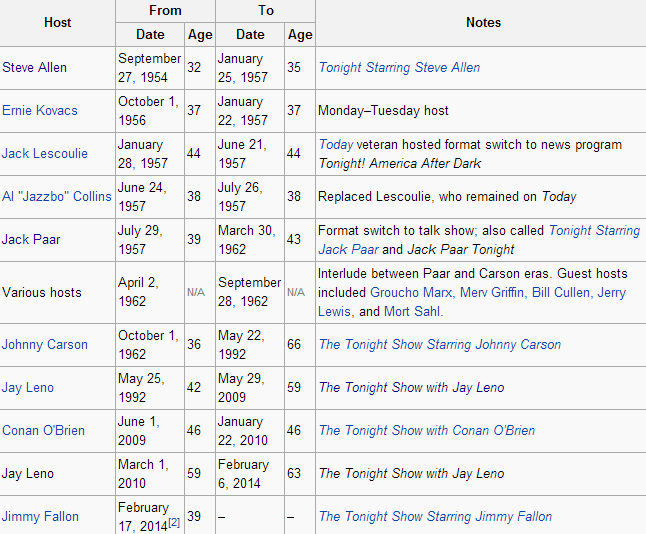



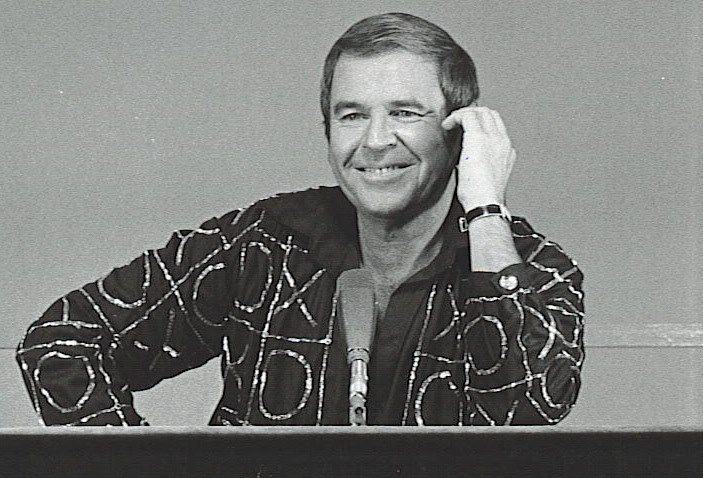



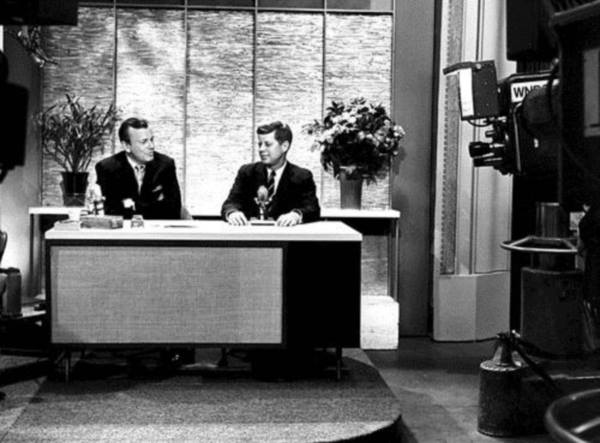



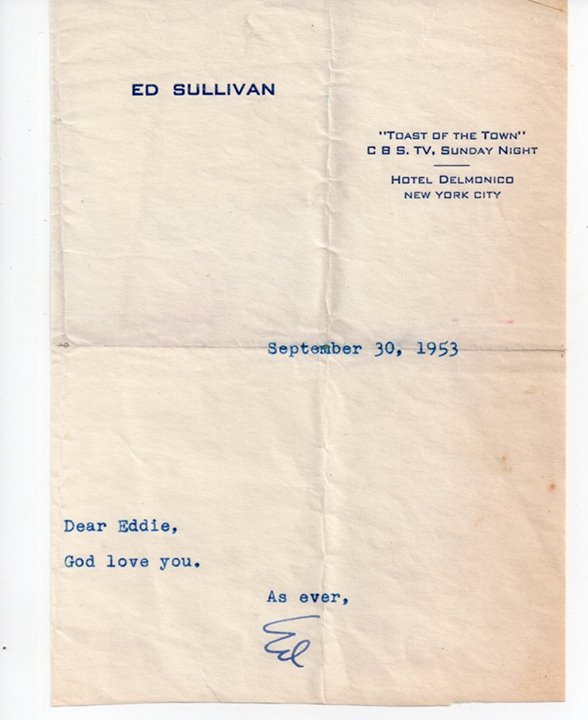

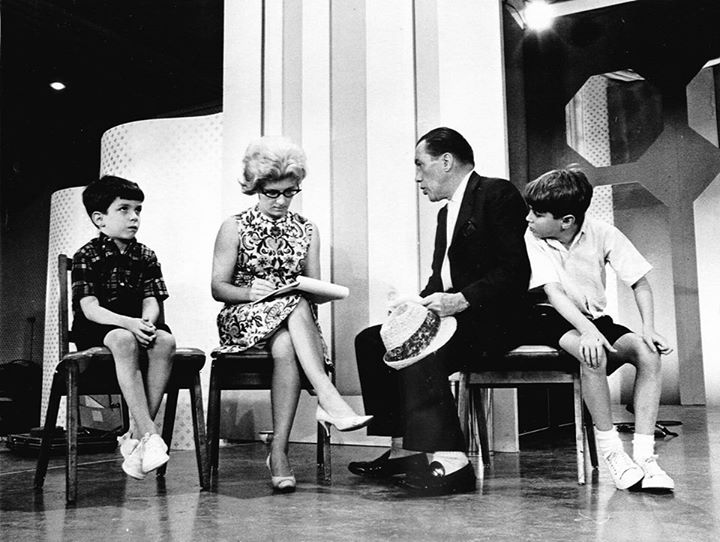

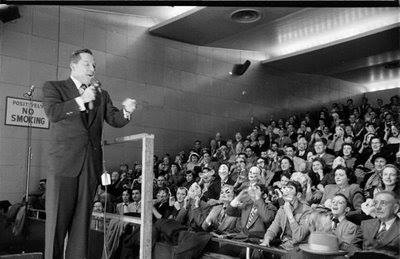



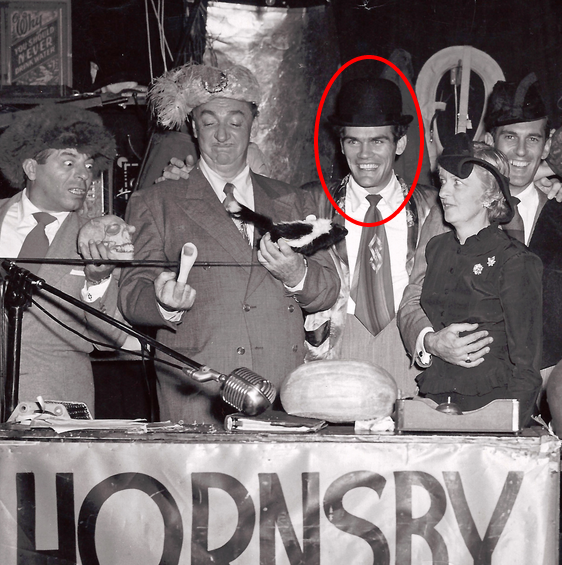

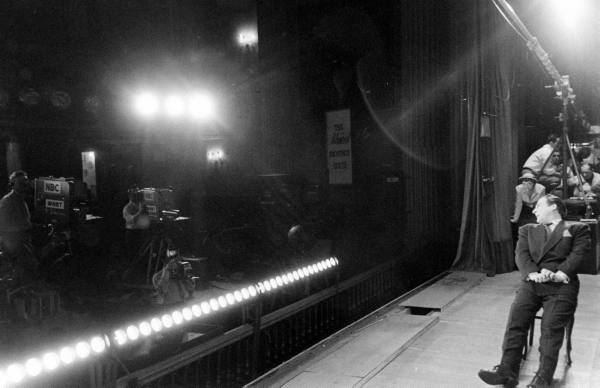



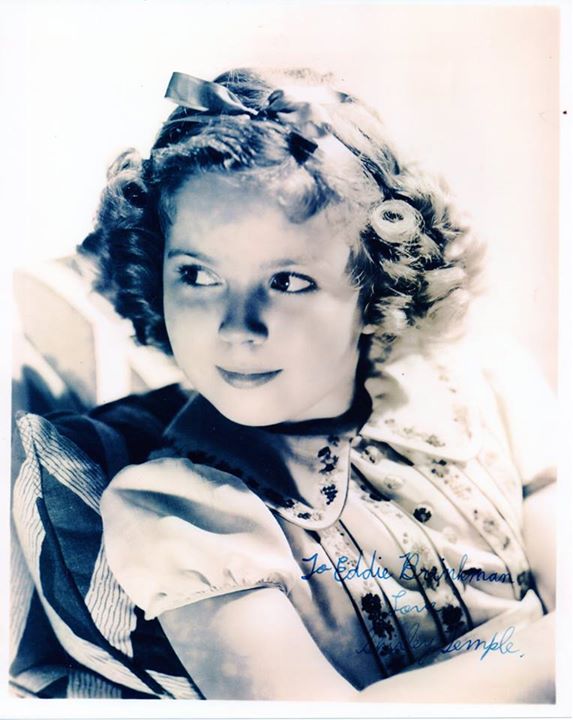

Posts in Category: TV History
Page 92 of 136
« Previous
1
2
3
4
5
6
7
8
9
10
11
12
13
14
15
16
17
18
19
20
21
22
23
24
25
26
27
28
29
30
31
32
33
34
35
36
37
38
39
40
41
42
43
44
45
46
47
48
49
50
51
52
53
54
55
56
57
58
59
60
61
62
63
64
65
66
67
68
69
70
71
72
73
74
75
76
77
78
79
80
81
82
83
84
85
86
87
88
89
90
91
92
93
94
95
96
97
98
99
100
101
102
103
104
105
106
107
108
109
110
111
112
113
114
115
116
117
118
119
120
121
122
123
124
125
126
127
128
129
130
131
132
133
134
135
136
Next » 

The Wildest Camera Hustle You Have EVER SEEN!
On February 19, 2014
- TV History
The Wildest Camera Hustle You Have EVER SEEN!
Just in case you missed it, here’s ‘Tonight’ camera man Kurt Decker handling his pedestal camera like a jitterbug partner! The action starts as 1:09 and is frankly, amazing. This was posted in the comment section on the earlier story on Kurt. Thanks to Andy Rose for the clip. Enjoy and share it!
http://www.youtube.com/watch?v=9CmUKCeR2dk
While guest announcing on Fallon, Jeffrey Tambor warmed up the crowd with the same speech Hank Kingsley gives at the beginning of every “Larry Sanders” episo…
Truly Classic!
On February 19, 2014
- TV History
Truly Classic!
In Jackie’s dressing room at The Miami Beach Convention Center, “Ralph and Ed” watch a playback of that night’s show.
Under Construction…NBC Studio 6B
On February 19, 2014
- TV History
Under Construction…NBC Studio 6B
Thanks to our friend Dennis Degan, here are a couple of photos of 6B undergoing a massive face lift. In the October 20 photo on the left we see the curved steel platform under the audience riser start to take shape. In the November 23 picture on the right, you can see that the riser in place awaiting carpet and seats. In the A of the ladder, you can see the area where Jimmy’s desk will sit. For more, click on the link below. http://www.flickr.com/photos/dennisdegan


‘The Tonight Show Starring Jimmy Fallon’ Debut
On February 18, 2014
- TV History
‘The Tonight Show Starring Jimmy Fallon’ Debut
In case you missed it, you can see the kick off above. HOW ABOUT THAT SET? Cool! It’s huge…tall and rich looking with all that wood. I like the new theme song too! WHAT DO YOU THINK?
New Taping Schedules…’Tonight’ And ‘Late Night’
On February 17, 2014
- TV History
New Taping Schedules…’Tonight’ And ‘Late Night’
Today at 5PM, taping starts for ‘Tonight’ as it returns to NBC’s Studio 6B at 30 Rock, and that will be their regular schedule. Next Monday, Seth Meyers starts as the host of ‘Late Night’, and their schedule for taping starts at 6:30 in Studio 8G.
Little Known Facts Of Ed Sullivan’s Start With CBS…
On February 17, 2014
- TV History
Little Known Facts Of Ed Sullivan’s Start With CBS…
in 1948, Ed Sullivan was hired by CBS as a counter to the soon to debut ‘Texaco Star Theater’ starring Milton Berle on NBC. $375 a week was the shows production budget! In today’s money, that’s about $3,700 but that’s still barely a drop in the bucket. It was hard to do, but Sullivan and co creator Marlo Lewis (with Elvis in photo above) turned ‘Toast Of The Town’ into one of television’s biggest shows.
Previously a newspaper sportswriter, and vaudeville producer/emcee, Ed Sullivan made his most prominent mark on the entertainment industry as a show business columnist for “The New York Daily News”. His credentials and connections within the industry would grant Sullivan a unique synergy as the host of CBS’s new program. Ed was an influential columnist; if anyone could convince stars to work cheap, he could. CBS head Bill Paley, however, viewed Sullivan as a short-term investment: “Ed Sullivan was hired as a temporary master of ceremonies for a variety program I wanted in 1948 because the programming department could not find anyone like Milton Berle … We planned to replace him as soon as we could afford a professional master of ceremonies.”
Sullivan was hired to a dismal three-year contract to host ‘Toast Of The Town’. The contract stipulated that the show could be cancelled with two weeks’ notice, Sullivan and his partner Marlo Lewis would receive no profit or residuals, and their names would not appear on the billing (so that they could be replaced at any time). For their first two years on ‘Toast Of The Town’, Sullivan and Lewis took home no pay for their efforts, funneling their meager earnings into keeping the show alive.
‘Toast Of The Town’ debuted at 9 P.M. on June 20th, 1948 with a diverse lineup that would be indicative of Sullivan’s formula to come. The bill featured comedy duo Jerry Lewis and Dean Martin, Broadway producers Rodgers and Hammerstein, ballerina Kathryn Lee, pianist Eugene List, singing fireman John Kokoman, jazz singer Monica Lewis, and boxing referee Ruby Goldstein.
Reviews of the debut program’s talent were overwhelmingly positive, but many critics focused harshly on Sullivan’s on-screen persona. Sullivan had little acting ability and was immediately criticized for his wooden, deadpan delivery. Seemingly of two minds regarding his critics, Sullivan was alternately defensive and self-effacing. In response to Harriet Van Horne’s assertion in New York’s “World Telegram & Sun” that he got where he is, not by having a personality, but by having no personality, Sullivan wrote “Dear Miss Horne. You Bitch. Sincerely, Ed Sullivan.”
Critics focused on Sullivan’s shortcomings as a host, but failed to credit his singular greatest talent: that of producing his weekly variety show. His skill at scouting talent and balancing the various high-brow, low-brow, and kiddy fare acts that made up each program’s roster was unrivaled in television and vaudeville history. As the show’s producer, he took dictatorial control over every aspect of its production. In contrast to his persona as the reserved and respectful host, as producer he didn’t care who he offended.
Sullivan’s methodology was simple. After choosing and booking the acts for a given week’s broadcast, he would run a full dress rehearsal in front of a live audience on Sunday afternoon prior to the evening’s live broadcast. Ed stood offstage, carefully watching each act and gauging the audience’s response. After dress rehearsals concluded, Sullivan would drastically retool the night’s show up until the last minute, canceling some acts, extended or shortening others, changing song selections, forcing lyrical changes, and would otherwise completely alter the show based on his impressions of what would play best to a national audience. At times, he would even make changes during the show, shuffling the running order to speed up the tempo, cover backstage snafus, or to better set up the closing act.
The naturally competitive Sullivan was interested in one thing only: ratings success. He instinctively knew that the only way to ensure his place on the air was to continue to hold his audience while attracting new viewers. Throughout 1948 Sullivan was testing his formula, his version of updated vaudeville: highbrow and lowbrow, something funny, something for the kids. The bookings could ever so slightly challenge the audience, but he always included material to soften any edge. Sullivan made “variety” the strength of ‘Toast Of The Town’. By the spring of 1950, the show could safely be viewed as a success after two seasons. Sullivan and Lewis had begun to profit from the show due to contract renegotiations, advertising sponsorship had stabilized, and reviews of the program had remained favorable. The program faced considerable new competition in the fall of 1950 from NBC’s ‘Colgate Comedy Hour’, but ultimately held its own against Colgate‘s high-budget extravaganza. Sullivan even went so far as to book competitor Milton Berle himself as a guest.
Below is the rarely seen Marlo Lewis…the man who pitched the show idea and the host to CBS. Lewis was the show’s co creator and co producer. Ed handled the booking and talent end and Marlo handled the television and sponsor end. Here he is below with Elvis on his second Sullivan show.
‘Tonight’…From Allen To Fallon
On February 17, 2014
- TV History
‘Tonight’…From Allen To Fallon
This is a pretty good lay out of the who and when of the ‘Tonight’ show history, including the periods between hosts. Please share.
50 Years Ago Tonight! The Beatles, live on ‘Ed Sullivan’ from Miami
On February 16, 2014
- TV History
50 Years Ago Tonight!
The Beatles, live on ‘Ed Sullivan’ from The Deuville Hotel in Miami Beach. Thanks to Gay Linvill, here is a brand new photo…one I had never seen until today. This is the first time ever that the CBS/Ikegami hand held prototype ENG camera had been used on an entertainment show. Notice the CBS logos are on pieces of cardboard attached to the side of the cameras…it is covering the large and unique WTVJ camera art. On the camera on the left, you can see the WTVJ call letters on the viewfinder through the paper covering it.
Just For Laughs…Paul Lynde From ‘Hollywood Squares’
On February 16, 2014
- TV History
Just For Laughs…Paul Lynde
From ‘Hollywood Squares’, here are a couple of dozen of Paul’s classic reply’s to Peter Marshall’s questions. Enjoy!
Peter Marshall: Will a goose help warn you if there’s an intruder on your property?
Paul Lynde: There’s no better way!
Peter Marshall: In “Alice in Wonderland”, who kept crying “I’m late, I’m late?”
Paul Lynde: Alice, and her mother is sick about it.
Peter Marshall: According to Tony Randall, “Every woman I’ve been intimate with in my life has been…” What?
Paul Lynde: Bitterly disappointed.
Peter Marshall: Diamonds should not be kept with your family jewels, why?
Paul Lynde: They’re so cold!
Peter Marshall: What is a pullet?
Paul Lynde: A little show of affection…
Peter Marshall: In the Middle Ages, Paul, people in convents were not allowed to eat beans because they believed something about them we now know isn’t true. What?
Paul Lynde: Well, I know they took a vow of silence…
Peter Marshall: Promethius was tied to the top of a mountain by the gods because he had given something to man. What did he give us?
Paul Lynde: I don’t know what you got, but I got a sports shirt.
Peter Marshall: When Richard Nixon was Vice-President, he went someplace on a “good will mission,” but instead wound up being stoned and shouted at. Where did this take place?
Paul Lynde: Pat’s room .
Peter Marshall: True or false, cow’s horns are used to make ice cream.
Paul Lynde: You mean those weren’t chocolate chips?
Peter Marshall: What are “dual purpose”cattle good for that other cattle aren’t?
Paul Lynde: They give milk and cookies…but I don’t recommend the cookies!
Peter Marshall: Paul, why do Hell’s Angels wear leather?
Paul Lynde: Because chiffon wrinkles too easily.
Peter Marshall: It is considered in bad taste to discuss two subjects at nudist camps. One is politics. What is the other?
Paul Lynde: Tape measures.
Peter Marshall: True or false, the navy has trained whales to recover objects a mile deep.
Paul Lynde: At first they tried unsuccessfully with cocker spaniels…
Peter Marshall: It used to be called “9-pin.” What’s it called today?
Paul Lynde: Foreplay!
Peter Marshall: When you pat a dog on its head he will usually wag his tail. What will a goose do?
Paul Lynde: Make him bark.
Peter Marshall: Paul, in the early days of Hollywood, who was usually found atop Tony, the Wonder Horse?
Paul Lynde: My Friend Flicka.
Peter Marshall: During the War of 1812, Captain Oliver Perry made the famous statement, “We have met the enemy and…” What?
Paul Lynde: They are cute.
Peter Marshall: Burt Reynolds is quoted as saying, “Dinah (Shore)’s in top form. I’ve never known anyone to be so completely able to throw herself into a…” A what?
Paul Lynde: A headboard.
Peter Marshall: What is the name of the instrument with the light on the end, that the doctor sticks in your ear?
Paul Lynde: Oh, a cigarette.
Peter Marshall: In one state, you can deduct $5 from a traffic ticket if you show the officer…what?
Paul Lynde: A ten dollar bill.
Peter Marshall: It’s well known that small amounts of female hormones are found in the male body. Are male hormones ever found in the female body?
Paul Lynde: Occasionally.
Peter Marshall: In the “Wizard of Oz,” the lion wanted courage and the tin man wanted a heart. What did the scarecrow want?
Paul Lynde: He wanted the tin man to notice him.
Peter Marshall: Billy Graham recently called it “our great hope in a confusing and ever-changing world.” What is it?
Paul Lynde: Pampers.
Peter Marshall: Paul, how many men are on a hockey team?
Paul Lynde: Oh, about half.
An Exclusive From The Eddie Brinkmann Archives…Part 5
On February 16, 2014
- TV History
An Exclusive From The Eddie Brinkmann Archives…Part 5
Aside from the Duke Ellington autograph, there is plenty more of interest on this show rundown sheet. Notice this is from Monday, February 23, 1970. This would be a day after the live show, and is probably day one of a two day schedule for a prerecorded show. In the 70’s, the show started to travel more and some home base shows had to be done in advance. This looks like camera blocking day and with Edward Villella and Peter Gennaro (both dancer/choreographers) there will more than likely be dance troupes involved. Notice at the bottom of the page the orchestra prerecording sessions at Media Sound Studios. The Muppets would probably go ahead and lay down their vocal parts to be played back, but with Peggy Lee and Dionne Warwick, they would only be recording the music, back up voices and effects but not the lead vocals. Someone mentioned here a few weeks back that they thought Sullivan allowed lip syncing, but I do not think that was ever the case. Bands and singers would at times record their music and backing vocals, but I’m pretty sure Ed demanded that they sing the lead live. Only in rare cases when there was some kind of effect on a well known recording that was difficult to duplicate live were acts allowed to use a recorded lead track. In the ’69, Rolling Stones last appearance, they played and sang “Gimmie Shelter” live, but a click track had Mary Clayton’s backing vocals. Even Bing Crosby with the flu had to sing “White Christmas” live one year late in his career.
‘Tonight’…The Jack Paar Era
On February 16, 2014
- TV History
‘Tonight’…The Jack Paar Era
Location wise, the ‘Tonight’ show with Jack Paar started where Steve Allen left off…in the Hudson Theater but the final show from there came the week the 1950s ended. The first week of January 1960, the show’s new home would be NBC’s Studio 6B. In the photo below (and at the link above) we see Jack’s famous June 16, 1960 interview with JFK done with RCA TK11/31 black and white cameras in 6B. The show went color September 19, 1960, but on January 12, 1959, while still at The Hudson, the show had begun being videotaped. For the first few months of taping, Paar did the Thursday night show live for some reason, but before long that ended and over the years, the taping time moved from 8 PM till 6:30 PM.
Steve Allen hosted his final episode of Tonight on January 25, 1957. The following Monday, NBC debuted a new multi-hosted, “magazine” show in the time slot…’Tonight: America After Dark’. It was an instant flop and they hurriedly began searching for someone who could do a new version of ‘Tonight’ that was more like the old version. The logical choice might have been Ernie Kovacs, who’d hosted two nights a week during the final months of Allen’s run, but Kovacs had moved west and was appearing in movies. Instead, they picked Jack Paar, who had hosted an array of short-lived programs for all the networks in the preceding years. Paar got his first tastes of television in the early 1950s, appearing as a comic on ‘The Ed Sullivan Show’ and hosting two game shows, ‘Up To Paar’ (NBC) in 1952, and Bank on the Stars (CBS) in 1953, before hosting ‘The Morning Show’ in 1954 on CBS.
Paar took over NBC’s late night time slot on July 29, 1957.
The early Paar ‘Tonight’ program was a mess. At one point before its debut, someone at NBC got the brilliant idea that it should consist of three separate game shows. Each night, the contestant who won the first would move on to appear on the second…and so forth. This notion was discarded, in part because ‘America After Dark’ was sinking fast and there wasn’t the time to develop three new game shows. So they went with the idea of conversation/chat show but even then, NBC wanted to save a tiny amount of money by booking guests a week at a time — the same people for five nights in a row. This too was discarded but for the initial weeks, Paar struggled to make conversation with eccentric guests in whom he had no interest. Further souring the proceedings was the man selected as Paar’s sidekick, veteran comic actor Franklin Pangborn. Pangborn had been funny in scripted film parts but on a live, ad-lib show he was a disaster.
For several months, Paar teetered on the brink of cancellation but then everything miraculously came together. Pangborn was eliminated and eventually, the show’s announcer, Hugh Downs, expanded his role to full sidekick status. And Paar found his style and the right kind of guest to have on. He soon had a whole stock company of recurring visitors that included Alexander King, Oscar Levant, Dody Goodman, Jonathan Winters, Peter Ustinov, Hans Conried, Zsa Zsa Gabor, Elsa Maxwell, Cliff “Charlie Weaver” Arquette and Peggy Cass.
When network censors cut a joke about a “water closet” (the British term for a toilet), on February 11, 1960, he received national attention by leaving the show and did not return until three weeks later after the network apologized and he was allowed to tell the joke. Paar’s emotional nature made the everyday routine of putting together a 105-minute program difficult to continue for more than five years. As a TV Guide item put it, he was “bone tired” of the grind. He signed off the show for the last time on Friday, March 30, 1962. The following six months were filled by numerous guest hosts as NBC awaited the expiration of the “no compete” part of Johnny Carson’s ABC contract.
Because NBC did not want to lose Paar to another network, it offered him a Friday prime-time hour, giving him carte blanche on content and format. Paar agreed, deciding on a variation of his late-night format and titling his show, which first aired in the fall of 1962, ‘The Jack Paar Program’…that ran until 1965.
NBC’s First Live Coast To Coast Color Spectacular!
On February 14, 2014
- TV History, Viewseum
GREAT! NBC’s First Live Coast To Coast Color Spectacular!
On Sept. 12, 1954 NBC broadcast their first live coast to coast color spectacular. The 90 minute show, “Satin & Spurs” was produced by Max Liebman and starred Betty Hutton.
Above is a black and white kinescope of the whole show, but there’s no mistaking as you look at the image that there is a “chroma layer” to the image. Following the end credits, Steve Allen has a very interesting live commentary from the set on the production, and reveals that with no control room in the new facility, the show was produced from a truck outside of NBC Brooklyn.
There is a TK41 in that segment. At 1:10:13, Hutton does a curtain call and speaks to the television and live audience and sings out into the credits. At 1:14 Steve Allen’s comments come in followed by Don Pardo’s billboards of upcoming programs.
Thanks to our friend Steve Dichter in LA for this information and the TV Guide page below that describes this event as “opening night of a new television era”. The spectaculars were the creation of none other than NBC’s Pat Weaver. At the time, the few color television sets available had 15″ screens, but a few had the new 19″ screen. 99% of viewers saw this on their larger screen black and white sets. Enjoy!
An Exclusive From The Eddie Brinkmann Archives…Part 4
On February 14, 2014
- TV History
An Exclusive From The Eddie Brinkmann Archives…Part 4
As you will see in the post below this one, Ed Sullivan had a largely unknown soft side. To most, he seemed temperamental and easily angered and frankly, the best advice for staff and crew was to keep your distance. As stage manager, Eddie Brinkmann was not able to do that as he was the key man Ed dealt with on stage. In the coming days, you will see several “special” letters from Ed to Eddie including this one. It is the first of the “kiss and make up” notes Brinkmann would get after being fired and he was fired many times, but is the only staff member to make it from start to finish with Ed…from 1948 till 1971. Thanks to Brinkmann’s granddaughter Dee Wexler for sharing his papers with us.
A Side Of Ed Sullivan We Never Knew…
On February 14, 2014
- TV History
A Side Of Ed Sullivan We Never Knew…
In the photo is Barbara Smith Forster with Ed and his two grandsons. They are on stage at the Deuville Hotel in Miami where the Beatles performed live 50 years ago on Sunday, February 16, 1964. Barbara was secretary to the show’s producer, and Sullivan son-in-law Bob Precht. I’ve had the good fortune to have some extended conversations with Barbara and other Sullivan staffers over the past month and that has given me a lot of new insights into the show and it’s people, including Mr. Sullivan. It’s well known that Ed had an explosive temper and was by all accounts, “a bit gruff”, however…there were things he did in private that most never knew about. For instance, the Tessie O’Shea appearance on the Beatles debut show. Along with the fab four and Georgia Brown of ‘Oliver’, Tessie shares top billing on that famous marquee, but why? The truth is, Sullivan had a soft spot for some of the old vaudeville and Broadway people that were having a hard time. Occasionally, like in Tessie’s case, he would book them on the show himself and surprise the talent scheduling people. At times, he would encourage night club owners he knew in the northeast to offer bookings to some, but Mr. Sullivan would also secretly give many of them a “loan”. For those of us lucky enough to have grown up with ‘The Ed Sullivan Show’ as a part of our lives, we know that this was one of a kind! Nothing that comes after it can ever capture the uniqueness, stature and iconic nature of one of television’s true landmarks.
‘Broadway Open House’…The Start Of Late Night Television
On February 14, 2014
- TV History, Viewseum
‘Broadway Open House’…The Start Of Late Night Television
This is some of the only surviving video of the show, and in the photo is host, Jerry Lester on stage in the brand new NBC Studio 6A, hosting network television’s first late-night comedy-variety series. It was telecast live on NBC from May 29, 1950 to August 24, 1951, airing weeknights from 11 to midnight.
A dozen years before Johnny Carson took over the reins of ‘The Tonight Show’, and long before Jack Paar and Steve Allen redefined the genre, NBC began an experiment in programming that has, in one incarnation or another, lasted over six decades…the late night variety show. The show came about due to the visionary work of Sylvester `Pat’ Weaver (father of actress Sigourney Weaver and brother to comedian `Doodles’ Weaver) who began his career as a radio producer in the 1930s (Fred Allen’s Town Hall Tonight), and who eventually became head of programming for the NBC radio network. In 1949 he was brought over to the struggling NBC TV network in hopes that he could break the CBS’s stranglehold on the ratings. One of the first innovations that Weaver introduced came in the form of ‘Broadway Open House’.
The show was supposed to be hosted by comic Don “Creesh” Hornsby, but Hornsby died suddenly two weeks before the show premiered. In a last minute bit of substitution, Morey Amsterdam, who already had hosted a variety show on the Dumont network, covered Monday and Friday nights and a brash young comedian named Jerry Lester did Tues-Weds-Thurs.
Lester had previously been the host of DuMont’s “Cavalcade of Stars”, but walked off the show earlier in the year. Filling in for AWOL Lester was a young comedian named Jackie Gleason, who moved the show to CBS and became a mainstay of TV for 20 years. Amsterdam would leave “Broadway Open House” quickly, leaving Lester to cover five nights a week. Lester was the master of “low comedy”, and his antics were what you might expect from a baggy pants vaudeville comedian of another era. Pratt falls, rapid fire deliveries (so if one joke fails, the next is already on the way), and juvenile antics. He was, however, exactly what the late night show needed. Someone was lively, who was able to ad lib, and someone who could do an hour a night.
Lester padded his show with regulars, including dancer Ray Malone, accordionist Milton DeLugg, announcer Wayne Howell and vocalists Jane Harvey, Andy Roberts and David Street. The show began in May of 1950, but in mid-June Lester hired buxom Jennie Lewis for a bit part, where she was to read some poetry, act dumb, and give the show some eye-candy. Lester named her `Dagmar’, and smirked about her `hidden talents’. Dagmar was an immediate success, and became a regular member of the cast and thus was born “the dumb blonde” stereotype.
By the end of the year, Dagmar was a sensation. American TV’s first sex symbol. Her popularity grew to the point where she was getting more fan mail than the host, Jerry Lester. In 1951, out of frustration, Lester quit the show. Dagmar went on to host it briefly, before the show was canceled later in the year.
`Pat’ Weaver, who created this genre of late night programming, would end up creating the venerable Today Show for NBC, and pioneered the practice of networks (instead of sponsors) owning a show, and selling advertisements.
An Exclusive From The Eddie Brinkmann Archives…Part 3
On February 13, 2014
- TV History
An Exclusive From The Eddie Brinkmann Archives…Part 3
Written by Sullivan himself, here is the 1953 ‘Variety’ 5th Anniversary article. In his own words, Ed tells us how the show came to be, but near the end, Sullivan talks about hosting a 1947 charity event that he says was the first CBS remote and swears that he did not know that both he (as MC) and the event was on television. This is a high resolution scan but if you have trouble reading it, hold the Control button and hit the + button a couple of times. Control and – takes you back to regular screen size.
THIS Is Where Late Night Television Starts…
On February 13, 2014
- TV History
THIS Is Where Late Night Television Starts…
The man circled in this photo is Don “Creesh” Hornsby. NBC’s Pat Weaver choose Hornsby to host network television’s first late night show called ‘Broadway Open House’. In the book “Fight for Tonight,” by Ronald L. Smith, he writes: “Hornsby was the ‘wild and crazy’ man of his day, a cross between Steve Martin and Pee-Wee Herman. He had a penchant for put-on humor and odd slapstick stunts. His antics included magic, piano playing, squirting customers with dry ice and shouting “Creesh!” as he magically pulled brassieres out of women’s blouses or cranked up a machine on stage that spewed potato chips.”
Hornsby’s local daytime TV show in California had a kind of Pee-Wee’s Playhouse set. There was a lot of thrift-shop garbage strewn around and in moments of hysteria, Hornsby would start talking to a large prop grandfather’s clock – which would talk back. Bob Hope was a fan of the wild comedian, calling him “a bright new talent, a guy who is going to have a big future.” I think Hope is the person that told Pat Weaver about him after Pat mentioned he wanted to do a late show. NBC signed him up to a five-year contract.
Everything was going well for young Creesh. He was 26, moving to New York with his wife and kids, getting ready for his debut as the host of a late night TV show, but sadly, here is the May 22, 1950 headline from Variety: “Don ‘Creesh’ Hornsby Dies of Polio Attack On Eve of TV Preem.” The premiere of the show was postponed a week, to May 29th. Guest hosts were called in and Dumont’s Morey Amsterdam hosted ‘Broadway Open House’ on Mondays and Tuesdays and Wednesday – Friday was handled by Jerry Lester. Lester had recently walked off Dumont’s ‘Cavalcade Of Stars’…he had hosted the show in it’s second year, but when he left, a comedian that was totally new to television took over. Lester’s replacement was Jackie Gleason.
All Hail Caesar!
On February 13, 2014
- TV History
All Hail Caesar!
Sadly, the father of television sketch comedy is no longer with us.
From 1950 till 1957, Sid Caesar was one of the biggest names in television. The link above is to one of my favorite sketches from the show. Below left, is Sid’s first television project, ‘The Admiral Broadway Revue’ in 1949. In the middle is a photo from ‘Your Show Of Shows’ which ran from ’50 till ’54 when Imogene Coca went on her own. Sid replaced her with Nanette Fabre and returned to the NBC airwaves with ‘Caesar’s Hour’ (right) which ran from ’54 till ’57. Some of the biggest writers ever got their start with Caesar including Mel, Brooks, Carl Reiner, Neil Simon, Woody Allen, Larry Gelbart and others.


Dave Puts An Audience Member Behind A Camera…
On February 13, 2014
- TV History
Dave Puts An Audience Member Behind A Camera…
It’s been a year since I first posted this, but now seems a good time for us to take another look. NBC’s ‘Late Night With David Letterman’ debuted at 12:30 AM, Monday, February 1, 1982 replacing Tom Snyder’s ‘Tomorrow’ show. This clip is from his second night on the air. At the end of the first week, the ratings were 30% better than Snyder’s. The night after this clip, baseball great Hank Arron was on and after his time with Dave, a camera followed him backstage where Marv Albert did a “post interview, interview” to see how it had gone, just like a post game interview.
Remembering Shirley Temple…
On February 12, 2014
- TV History
Remembering Shirley Temple…
There is just too much to say except Thank You! She made more than one generation smile. It just so happens that this photo is one she autographed to Sullivan stage manager Eddie Brinkmann on one of her many appearances on the show.
Page 92 of 136
« Previous
1
2
3
4
5
6
7
8
9
10
11
12
13
14
15
16
17
18
19
20
21
22
23
24
25
26
27
28
29
30
31
32
33
34
35
36
37
38
39
40
41
42
43
44
45
46
47
48
49
50
51
52
53
54
55
56
57
58
59
60
61
62
63
64
65
66
67
68
69
70
71
72
73
74
75
76
77
78
79
80
81
82
83
84
85
86
87
88
89
90
91
92
93
94
95
96
97
98
99
100
101
102
103
104
105
106
107
108
109
110
111
112
113
114
115
116
117
118
119
120
121
122
123
124
125
126
127
128
129
130
131
132
133
134
135
136
Next »